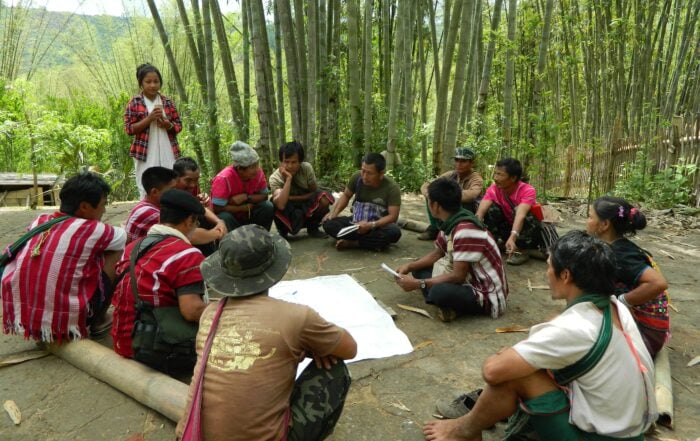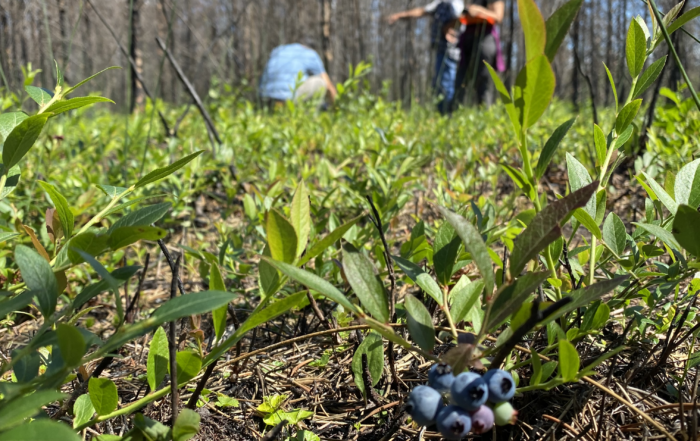Stories
Storytelling is an important part of many Indigenous knowledge systems. Stories help connect the mind, body, and spirit to places, histories, knowledge, and relationships.
A form of inter-generational knowledge transfer, stories inform us about the past, ground us in the responsibilities of the present,and connect us to the seven generations yet to come.
Below is a growing collection of stories about Indigenous-led conservation, including stories from Indigenous Protected and Conserved Areas (IPCAs).
These stories feature Indigenous voices speaking about Indigenous-led conservation initiatives in their territories. Sometimes, the stories are curated or documented by organizations that Indigenous governments have partnered with.
The stories inform, inspire, and celebrate.
Digital storytelling about Indigenous-led conservation is a newly emerging space. This collection will continue to grow as more Indigenous governments and communities document and share their stories.
Would you like to contribute a story to the IPCA Knowledge Basket?

Photograph Source: Fritz Mueller
Featured Stories
The Featured Stories are produced by the IISAAK OLAM Foundation in collaboration with Indigenous governments and partner organizations. They provide detailed information about Indigenous-led conservation initiatives such as IPCAs. We are grateful to those who have shared their stories for the benefit of others, in the spirit of “We rise together”!
Fort Folly First Nation: An IPCA Summer
This short documentary tells the story of Amlamgog (Fort Folly) First Nation’s Indigenous Protected and Conserved Area (IPCA). The story features the voices and perspectives of youth from the community who were hired for IPCA-related monitoring over the summer of 2022.
Salween Peace Park: Indigenous Conservation Governance in Southeast Asia
At 5,485 square kilometers, Salween Peace Park is one of the largest and most complex Indigenous protected areas in the world. Nestled between the Thai and Burmese borders, the internationally acclaimed Park emerged through an Indigenous-led vision for peace amidst more than 70 years of conflict.
Nanuk Knowledge and Dialogue Project
This project brings together Inuit leaders and knowledge holders, co-management representatives and interdisciplinary researchers to advance polar bear conservation and Inuit cultural continuity. This work is focused on the Eastern Arctic region of Canada
Inuit Co-management Led Research
This story highlights how Inuit communities are connected to caribou in a diversity of ways, including as a source of food, culture, identity, spirituality, clothing, physical health, mental and emotional well-being, and livelihoods. Written by Torngat Secretariat, the story highlights the importance of Inuit-led research for caribou conservation. (Wwritten with support from IISAAK OLAM Foundation.)
Red River Métis IPCAs
Indigenous Protected and Conserved Areas (IPCAs) are one of many initiatives the Manitoba Métis Federation is undertaking to protect species and places that are important to the Red River Métis. These are the stories of two IPCAs in the Métis homeland: Kettle Hills Blueberry Patch IPCA and Thompson Region IPCA.
Tla-o-qui-aht Tribal Parks
In Tla-o-qui-aht Territory, the Nuu-chah-nulth teachings of iisaak have been in place for millennia to enrich life and support biodiversity for future generations. In 1984, the Tla-o-qui-aht Peoples declared the Meares Island (Wanachus-Hilthuu’is) Tribal Park as a practice of iisaak to protect the territory from rampant clearcut logging. The Nation’s entire territory is now included in four Tribal Parks.
Thaidene Nëné – Land of the Ancestors
In 2019, Łutsël K’é Dene First Nation (Łutsël K’é) designated 26,376 square kilometres (6.5 million acres) of their lands and waters including the East Arm of Tu Nedhé (Great Slave Lake) in the Northwest Territories (NWT) an Indigenous Protected Area using their own Dene laws. After more than 50 years of advocacy for the land and their rights as Indigenous people, Łutsël K’é signed agreements with national and territorial governments (Parks Canada and the Government of the NWT).







